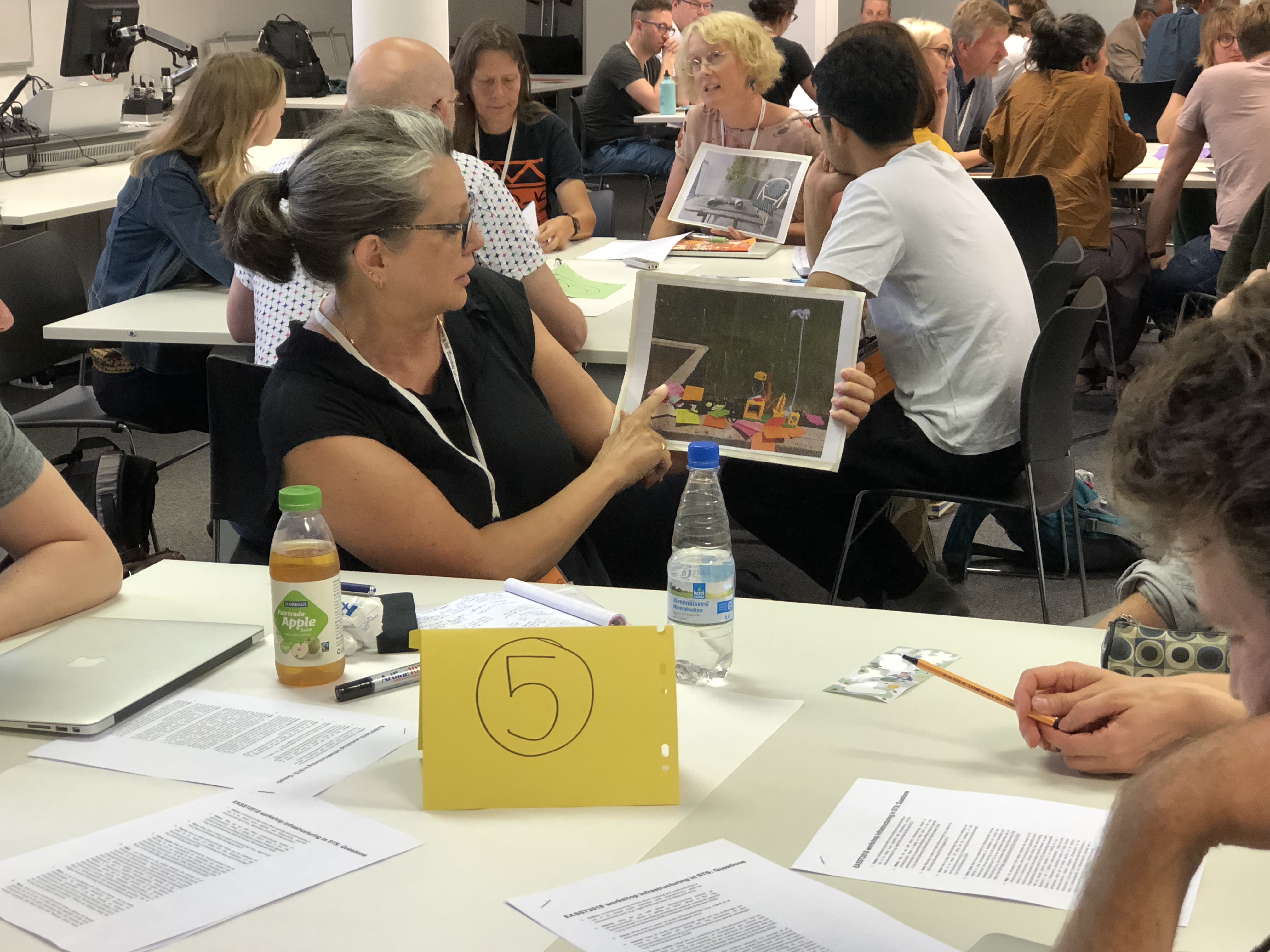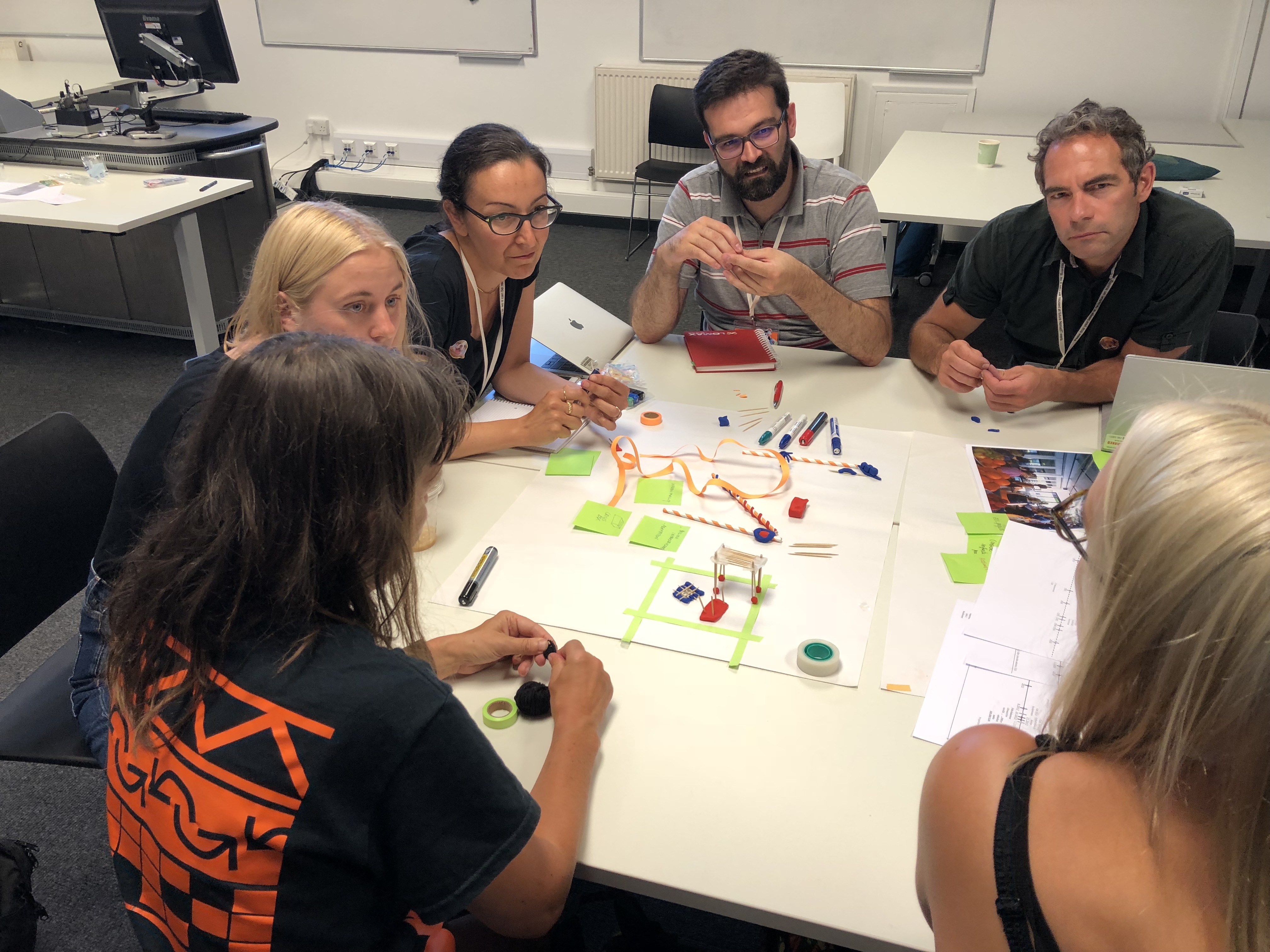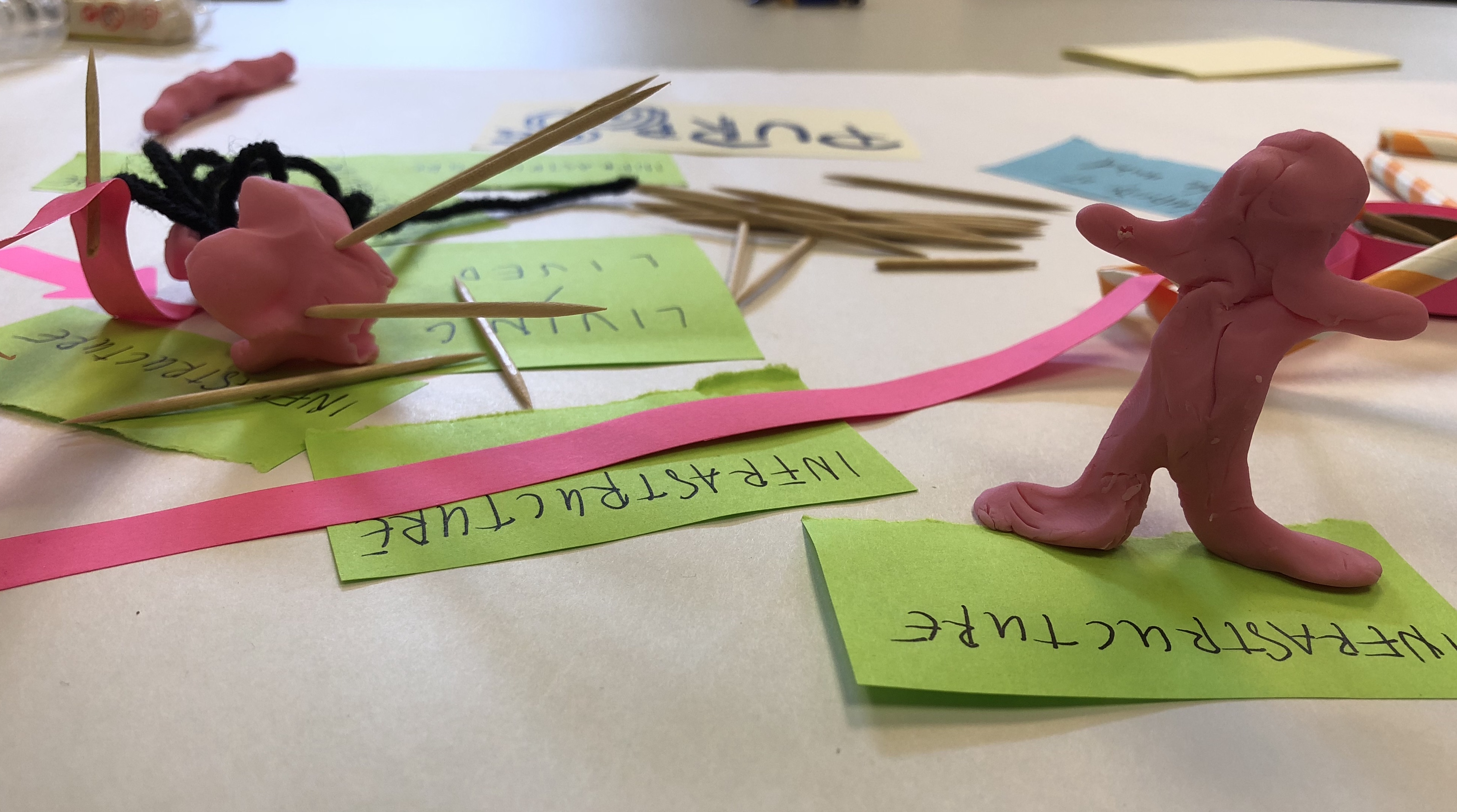The workshop was organized at the EASST2018 Conference to take stock of empirical insights and conceptual developments around the notion of infrastructuring in STS. We report on the collective process that aimed to critically map and disentangle assumptions, identify blind spots, and chart the varied uses of the notion in STS. By using a hands-on approach inspired by Participatory Design, the workshop contributes to the quest for new ways of thinking and inventing, in addition to proposing formats where collective conceptual experimentation could take place in cross-disciplinary settings.
During the EASST 2018 conference, we organized an experimental workshop with the title Infrastructuring in STS: What does infrastructuring look like? When does it look like that? The aim of the workshop was to stir discussion and reflection on the notion of infrastructuring in STS. The first instances of the use of the term infrastructure as a verb is found in Star and Bowker’s work (Star and Bowker 2002). Since then, it has gained traction in the STS field as can be testified by the close to 100 references we collected as part of the preparations for the workshop. The use of the gerund ‘infrastructuring’ is an analytical measure that shifts attention from structure to process, which has proven to be also appealing to many different research communities, including many design fields (Karasti 2014, Karasti & Blomberg 2018). Widely travelling concepts can be enriched by being influenced by different traditions in the research communities that adopt them. However, as acknowledged in the workshop, enthusiastic use and widespread adoption may also dilute the analytic purchase of this concept if connections between the different understandings of the concept are not maintained. In the workshop, some participants suggested the notion has become inflated, whereas others continued to see its value as the first wave of enthusiasm (with expected easy profits) passes.
We were interested in exploring and opening up the concept in a convivial way, with the daring idea of doing so using a hands-on approach. The possibility offered by EASST 2018 Conference to organise workshops triggered us to take inspiration from Participatory Design (Simonsen and Robertson 2013) with its focus on building together and using material artefacts as a way of thinking and drawing together through actual doing together (Latour 2008). As Noortje Marres elegantly put it in her closing keynote at the 2018 Participatory Design Conference, participatory design allows for “curating deliberate artifactual occasions as ways to reach to issues of entanglements” (Marres 2018). In the workshop, our understanding of entanglement was a conceptual one: what and when is infrastructuring?

We asked the workshop participants to bring an artefact to the workshop: an object, image, or drawing that would help them talk about “What does infrastructuring look like? When does it look like that?” The artefact would relate to the infrastructuring theme they would want to open up during the workshop. Participants assembled into groups of 5-6, each at a table accompanied by one of the organisers. The first session started with participants presenting their object (Picture 1) and placing it on the table, then introducing the themes and questions they wanted to address. In the second part of the workshop, the participants formed new groups and continued with the previous objects already on the tables, starting to draw connections between them or reflecting on themes they had previously brought up by using a range of materials provided, such as post-it notes, toothpicks, straws, stickers and tape (Picture 2). At the end of this session, each group presented their work to all the participants.
The feedback we received from this workshop was generally positive but also provided some constructive criticism. Participants appreciated the opportunity to have a facilitated critical discussion with peers interested in the same topic. However, some participants found it difficult to engage, think and communicate with the provided workshop materials. In addition, several participants expressed a wish to continue working with the same group throughout the workshop. In retrospect, rearranging the groups did not necessarily work well for the participants. Our idea had been that the afternoon groups would be able to build on reflections that were developed in the morning groups, but it seems we had not sufficiently taken into consideration the extent to which these reflections would be rooted in the dynamics of the specific groups.

To be able to revisit the discussions that occurred at the workshop after the event, we decided to ask for permission from participants to record the discussions at each table. Some participants questioned this choice. They argued that a workshop is something that takes place here and now and is not meant to endure outside the room and the moment. This critique addresses the intent of the workshop. Should the workshop aim to produce an outcome that could travel out of the room, or should the outcome rather be understood as residing within the participants? If the former is the case, are there other ways of preserving the discussions for later contemplation rather than by recording them? Can the material outcomes of the workshop serve this purpose, and in that case how? These are among the issues we will consider when arranging future workshops.
In working with the artefacts that participants had brought and materials provided by the organisers, many different understandings and uses of the notion ‘infrastructuring’ were compared and questioned. One of the participants noted in the feedback form that: “I was surprised that the notion of ‘infrastructuring’ has different meanings in different disciplines and practices”. Some participants were primarily attracted to the notion because of what it can add to the analysis of the empirical, such as a heightened sensitivity to process, practice, and relations. Others emphasised how ‘infrastructuring’ is situated in an ontological discussion so they were primarily interested in whether and how it constitutes a productive contribution to driving this discussion further. The process of understanding how the other participants at the table understood and used ‘infrastructuring’ analytically thus not only contributed to reflection about the concept as such, but also to broader reflections about interdisciplinary differences, similarities and entanglements between STS and disciplines that overlap or share a border with STS, such as Design, Anthropology and Information Systems.
With this workshop we brought to an STS context some practices from Participatory Design where materials, people and ideas are mobilized in collaboration. In the first session, this entailed using participants’ artefacts to talk about the notion of infrastructuring. In the second session, this entailed using different materials, such as modeling clay, straws and thread to explore connections between the objects and themes and to engage in mutual and constructive reflection about infrastructuring. Several participants expressed that talking through artefacts they had brought with them was helpful for the discussion because the objects or drawings concretized the themes that were addressed. The second session, which invited simultaneous reflecting and making, was viewed more challenging. For those who are not used to working with materials for reflection and reasoning, simultaneous thinking and making can initially be experienced as multitasking or sidetracking and thus divert one’s full attention from either. Entering a stage where making is seamlessly integrated with the thinking, may, however, serve to advance reflection. More guidance could perhaps support the transition from talking about artefacts to working with materials. This might take the form of explicit instructions to help overcome hesitancy in the encounter with an unfamiliar process. It could also include the gradual introduction of materials, so that the participants become familiarized with one material before having to deal with another. At the workshop in EASST2018 Conference we did, however, find that the different groups eventually warmed up to the task of thinking and communicating through making (Picture 3).

Using collaborative making and building to support abstract reflection seems like a promising direction for joint work on conceptual development. In a few cases we saw how the use of the materials reinforced “performative” aspects of the argument that a participant wanted to make. One example that occurred in several groups is how certain points were stressed by building a connection between concepts or infrastructure elements using bits of modelling clay or toothpicks and pieces of tread, and then smashing them up or cutting the connections while talking. While making is not the only strategy to achieve these types of connections, it is certainly one that could be used more. At a time when social sciences are starting to express interest in building new collaborative relationships with Participatory Design (Marres 2018), we support the quest for new ways of thinking, inventing and sensing collectively; hoping to further develop formats where such experimentation can take place, particularly in cross-disciplinary settings. Using a hands-on approach by working with artefacts appears to be a promising avenue to explore.